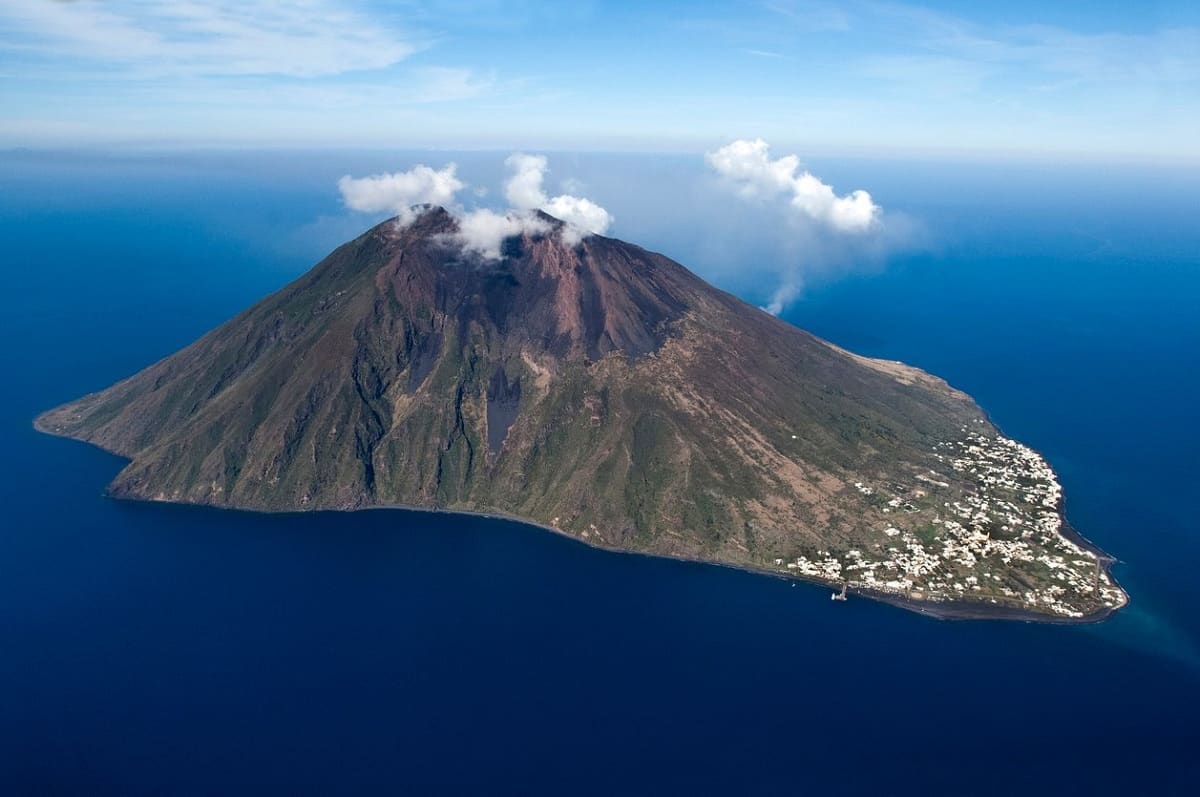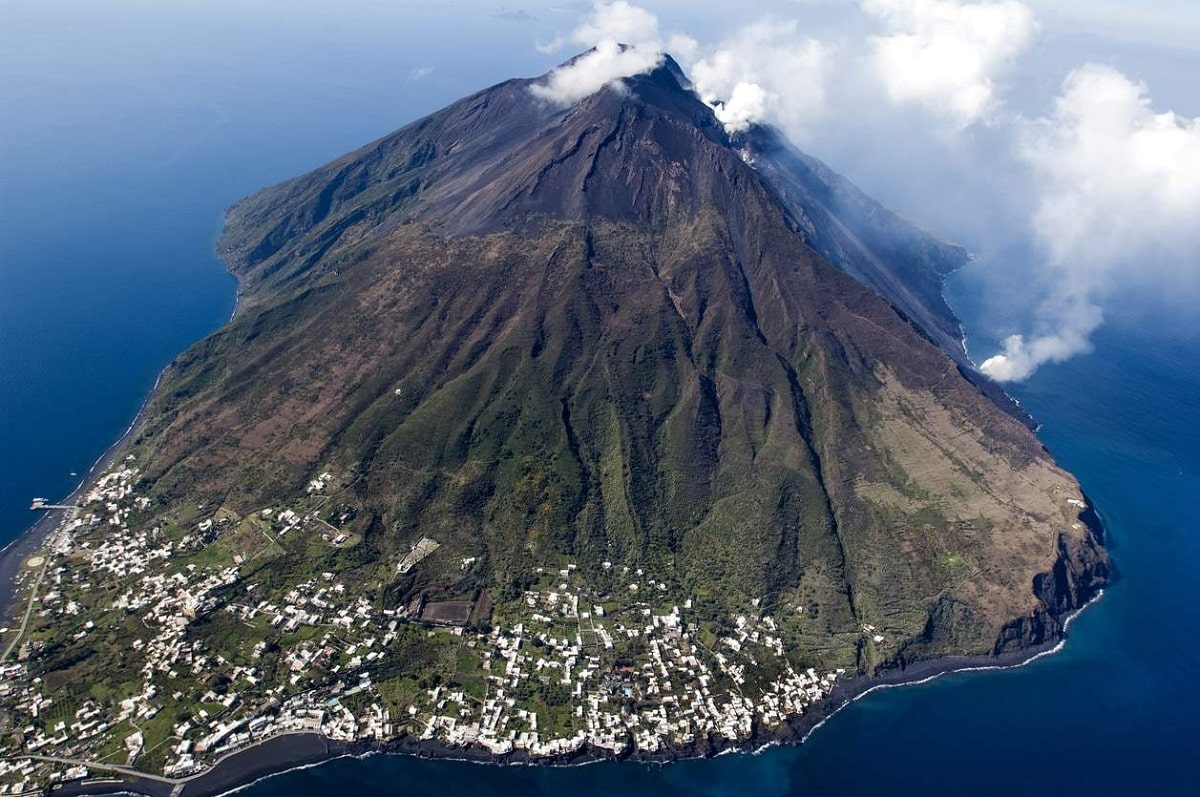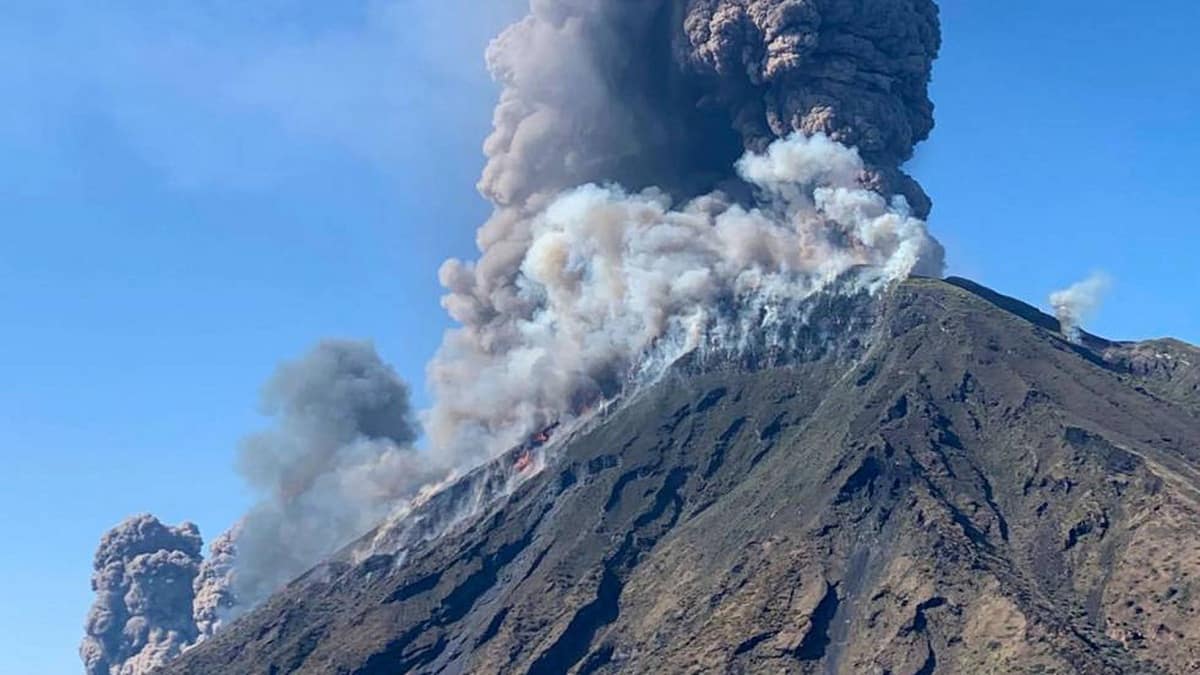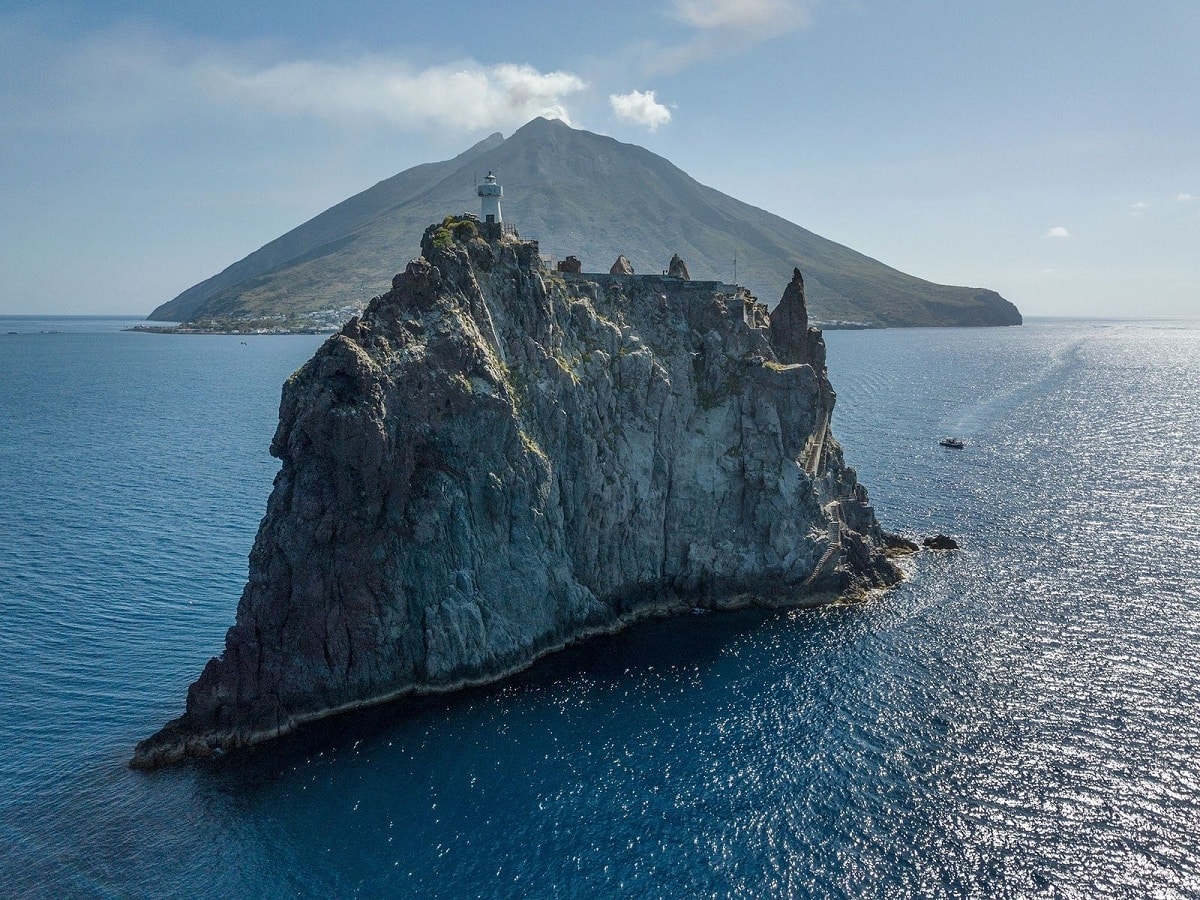
There are numerous types of volcanoes in the world depending on their characteristics, origin and type of eruption. One of the most important is the Stromboli volcano. It is a rather curious type of volcano due to its unique characteristics that has caused it to have great interest in the scientific community.
For this reason, we are going to dedicate this article to telling you everything you need to know about the Stromboli volcano, its characteristics, origin and type of eruption.
Stromboli volcano

Stromboli is one of the longest active volcanoes with a 2000-year history of activity. Among other things, it is characterized by the fact that approximately two thirds of its total height is under water.
His name is an Italianized version of his ancient Greek name Στρογγυλή (Strogule), meaning "circle" or "circle". This is due to the shape of its summit, the third part of the volcano that emerges from the ocean.
Another interesting fact about this Colossus is that it was declared a World Heritage Site by UNESCO in 2000, along with the rest of the Aeolian Islands, for its great contribution to the field of volcanology since ancient times, such as the discovery of the Vulcanians and strombolians.
As mentioned above, Stromboli is one of the Aeolian Islands located in the Tyrrhenian Sea in Italy. It is part of the city of Lipari, which in turn is part of the Metropolis of Messina. Its coordinates are 38°47'39″N 15°13'04″E.
Among its features we have:
- Volcano type: stratovolcano.
- Component: Solidified lava.
- Nearby cities: Metropolis of Messina.
- Threat Potential: Moderate.
- Altitude: 926 meters above sea level, 2000 meters above sea level.
- Area: 12,19 square kilometers.
- Estimated first eruption: 6.050 years.
- Last recorded eruption: 350 BC. C.—Reality.
How dangerous is the Stromboli volcano?
Although it is true that the volcano is not considered a great threat, we cannot deny that its instability can pose a threat to the inhabitants of the island, so it is necessary to study it further.
Along its history, Stromboli has claimed the lives of 11 people and injured many others in various ways. The number of people directly threatened by the colossus amounts to 400 people, the number of people living in Islam. However, in the event of a truly violent eruption, it could endanger the lives of the inhabitants of the surrounding islands, which number more than 10.000 inhabitants.
volcano activity

Although volcanic activity has been going on for about 2360 years, there are a few rashes that stand out from the crowd. It should be noted that prior to this, it is estimated that at least 8 major eruptions occurred between 6050 and 4050 BC. C and 8 more in this number. We will talk about the latter below.
Only five eruptions were lethal: 1919, 1930, 1986, 2001 and 2019. The 1919 eruption ejected large rocks that fell near two nearby communities, killing four people and triggering a tsunami. The 1930 eruption spewed an additional 30 tons of magma, which ended up taking the lives of four more people in various communities around the volcano.
In 1986, a man approached the rim of the crater when it erupted, and sadly, a piece of lava immediately took his life. For its part, a group of tourists was visiting the surroundings of the volcano in 2001, when it erupted as before, and a piece of lava killed one of them. We will talk about the 2019 eruption in the next section.
Stromboli eruption in 2016 to present

In 2016, the volcano's activity increased significantly and has remained so (except for a small amount of short-term activity) to this day. On October 21, 2016, several volcanic eruptions were observed, but they did not represent any significant risk to the civilian population.
Then, in 2017, there were four eruptions of moderate intensity, with massive ash eruptions and minor lava spills observed in the northern hemisphere of the crater. Even so, the residents of the island did not suffer any accident.
In the first half of 2018, the volcano was relatively inactive, save for two major planetary eruptions that did not pose any threat. However, in the second half of the year, some of Stromboli's vents erupted more than 60 times per hour. The Italian Civil Protection declared it unstable and began to monitor it more closely to evacuate residents in the event of an accident.
Stromboli started 2019 very active. There are several eruptions and moderate lava flows throughout January. In February and March, the volcano leveled off with much less activity, and May remained the same with a few minor exceptions.
However, on July 3 of the same year, the volcano violently erupted again, spewing thick smoke 3 kilometers above its highest point, spewing ash, rocks, and lava. The incident resulted in one death and one injury. After this event, 20 more small explosions were recorded without causing any problems, and a low-activity state was subsequently restored.
Sunset
The hot magma is directly visible from the top of the volcano. Ascend the volcanic cone of Stromboli in the afternoon, depart from the Pro Loco Tourist Office in Ficogrande, reach the caldera (200m below the summit) at sunset and watch the flame show at night between pitches. The four or six hour route is not suitable for people wearing sandals, especially the last stretch of fine volcanic slag makes you take two steps back for every two steps forward.
Warm clothes, plenty of water, food and sleeping bags are essential for an exciting trip to the volcano. However, the sparkling eruption that greets tourists with the volcano is worth any effort. The climb ends at 364 m above sea level. The crater, an enormous funnel, constantly venting fumaroles, from which sulfur vapors are released between 100 and 200ºC. It is safe to visit, although there are daily warnings and alerts every year, it is not recommended to stay away from guided tours or try to descend the volcano alone or at night.
I hope that with this information you can learn more about the Stromboli volcano and its characteristics.